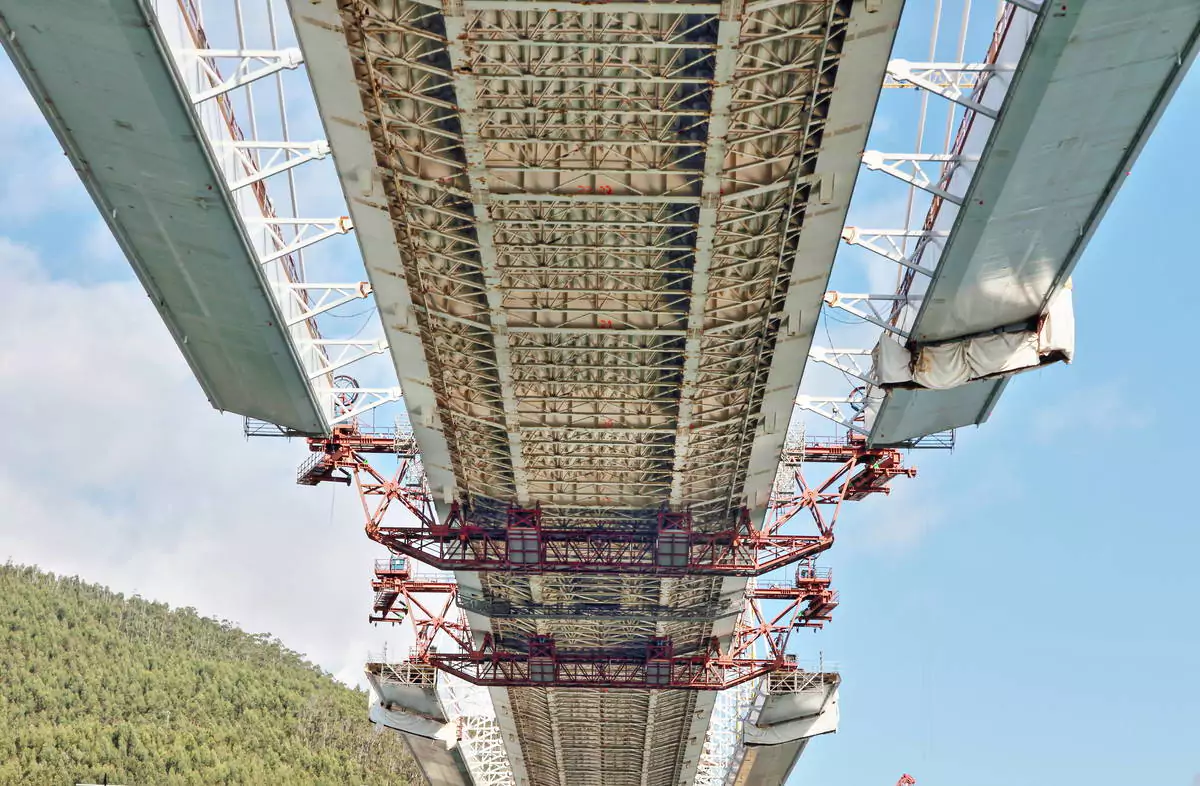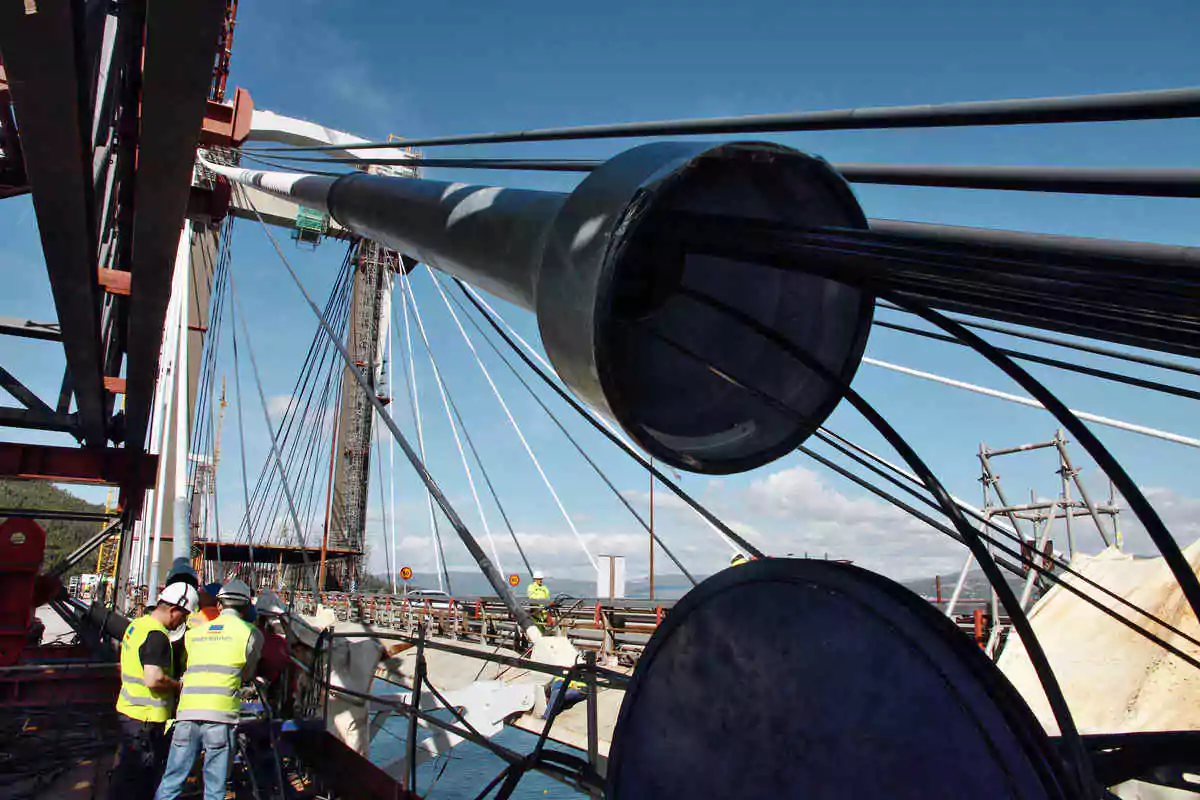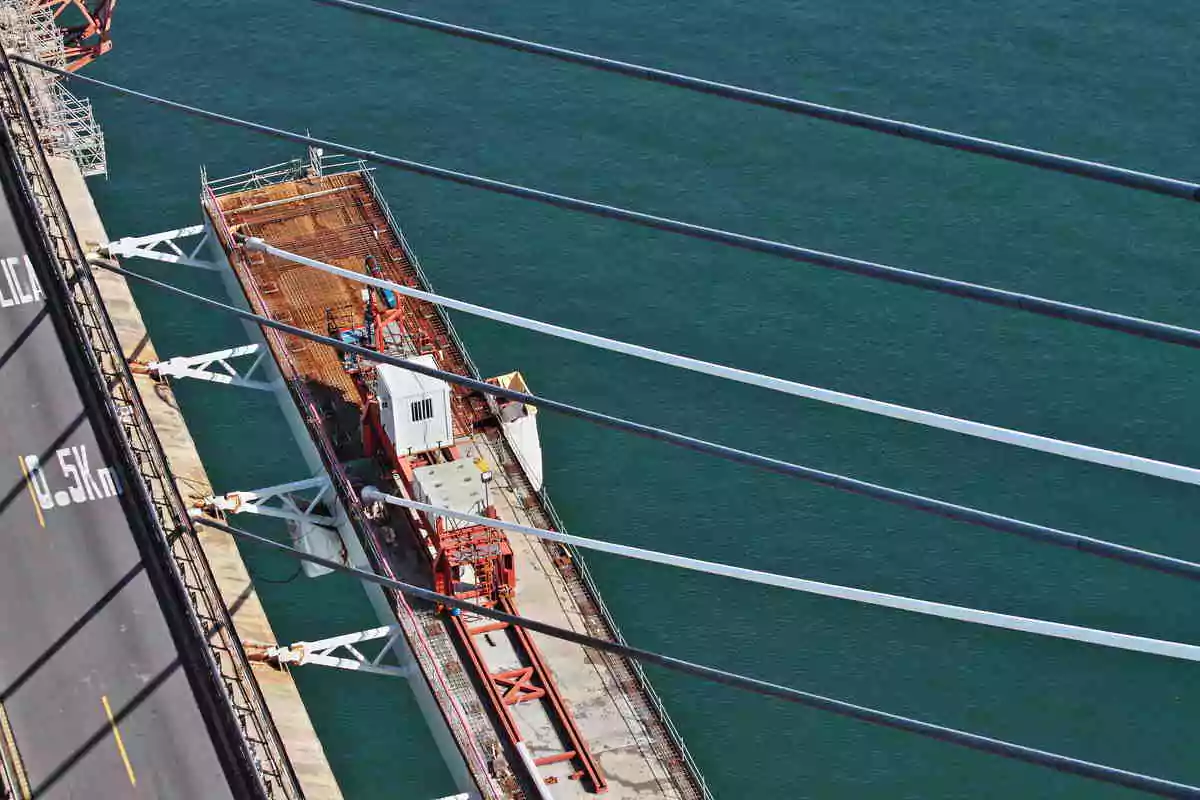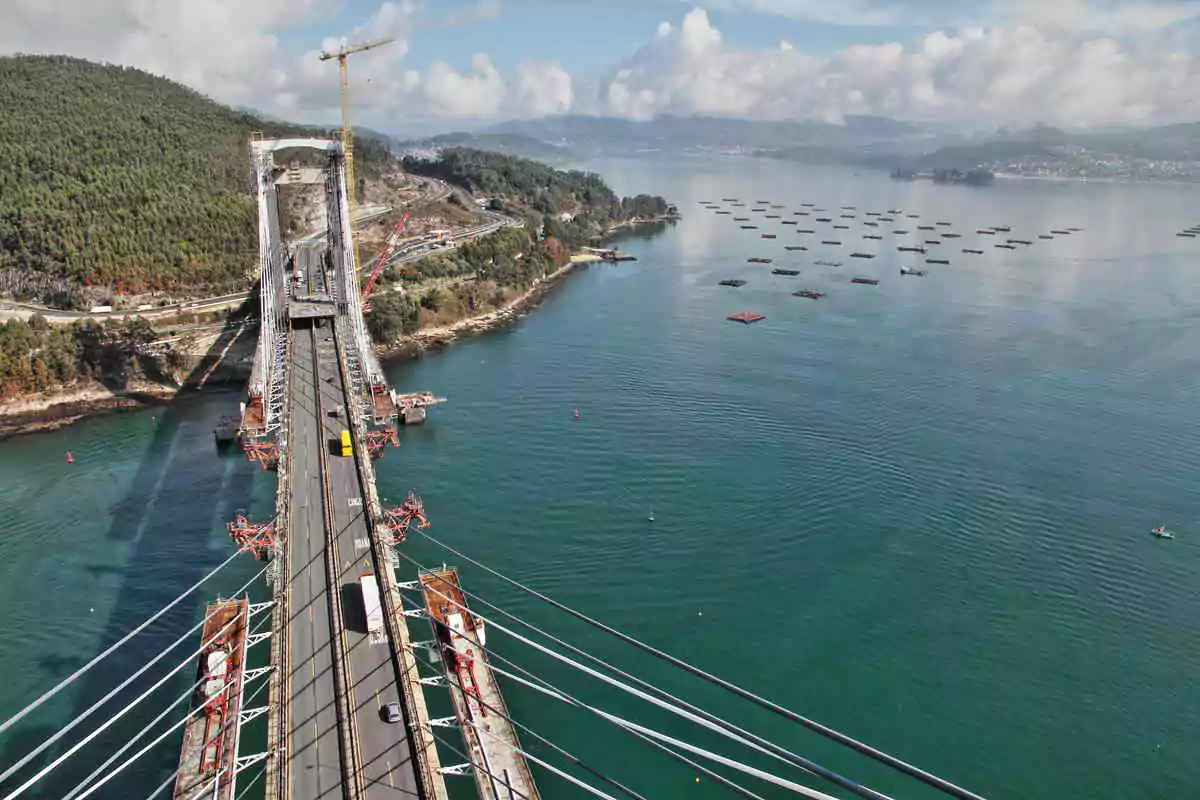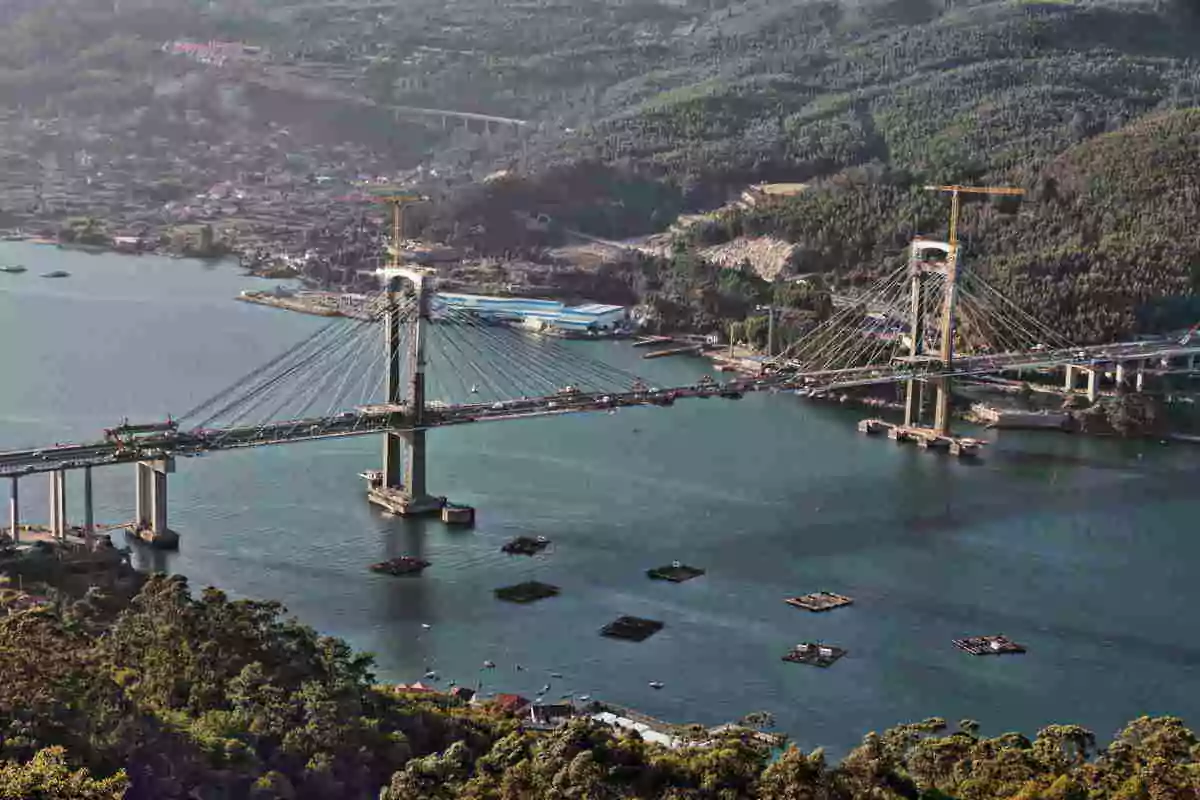
Overcoming traffic congestion
In 2006, 25 years after its inauguration, the average daily traffic flow of the bridge had reached 55,000 vehicles, a value close to the useful load-bearing capacity of the structure.
An initial analysis was requested with a view to widening by two lanes, one in each direction of traffic, by adding two new carriageways. After this initial analysis, the motorway operating company tasked MC2 Estudio de Ingenieria with the design of this innovative bridge widening project.
In 2015, the work contract was awarded to Dragados & Puentes Infraestructuras and Freyssinet for the implementation of the stay cables.
The widening of the Rande bridge had become an absolute necessity, with peaks of more than 70,000 vehicles per day. It had to address at the same time significant technical challenges.
